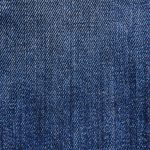Are you ready to embark on a new cross stitching adventure?
In this article, we’ll show you how to cross stitch on linen fabric, a beautiful and versatile material.
From choosing the right fabric to finishing and caring for your masterpiece, we’ll guide you step by step.
So grab your needle and thread, and let’s dive into the world of cross stitching on linen fabric.
Get ready to create something truly special!
Table of Contents
Choosing the Right Linen Fabric
When choosing the right linen fabric, it’s important to consider the thread count and the color. The thread count refers to the number of threads woven together in one square inch of fabric. A higher thread count generally means a smoother and more durable fabric.
For cross stitching, a medium to high thread count linen fabric is recommended to ensure that the stitches are secure and the design is well-defined.
As for color, it’s best to choose a fabric color that complements the colors in your cross stitch pattern. It’s easier to see the stitches and follow the pattern when there is a contrast between the fabric and the thread colors.
There are different types of linen fabrics available for cross stitching, such as Belfast linen, Cashel linen, and evenweave linen. Each type has its own unique characteristics, such as the weave and texture, so it’s important to choose the one that suits your stitching style and preferences.
Preparing Your Linen Fabric for Cross Stitching
When it comes to preparing your linen fabric for cross stitching, there are a few key points to keep in mind.
First, it’s important to choose the right linen fabric for your project. Consider factors such as thread count, color, and texture to ensure the best results.
Once you have your fabric, there are various techniques you can use to prepare it, such as washing and ironing, to ensure a smooth and even surface for your stitches.
Choosing the Right Linen
To choose the right linen for your cross stitch project, consider the fabric’s thread count and color. The thread count refers to the number of threads per inch in the fabric. A higher thread count provides a smoother and more even surface for your stitches. The color of the linen is also important, as it can enhance or detract from your finished piece.
Here are three tips for choosing the right linen fabric:
-
Determine the linen fabric type that suits your project. There are different types of linen available, such as Belfast linen, Cashel linen, and evenweave linen. Each type has its own unique characteristics and is suitable for different stitch counts.
-
Research and find reputable linen fabric suppliers. Look for suppliers that offer a wide range of linen fabrics in various colors and thread counts. You can check online marketplaces, specialty stitching stores, or even local fabric shops.
-
Consider purchasing a fabric sample before committing to a larger piece. This will allow you to feel the fabric’s texture and see how it looks with your chosen thread colors.
Techniques for Prepping
One helpful technique for prepping is ironing your fabric before you begin stitching. Ironing your fabric helps to remove any wrinkles or creases, ensuring a smooth and even surface for your cross-stitching. Make sure to set your iron to the appropriate heat setting for your fabric to avoid scorching or damaging it.
Another important prepping tip is to wash your fabric before stitching to remove any dirt or sizing that may be present. This will prevent any unwanted discoloration or shrinkage of the fabric after you’ve completed your project.
Lastly, be sure to properly measure and cut your fabric before starting. Common mistakes include not leaving enough border around your design or not cutting straight edges, which can affect the final appearance of your cross-stitch.
Selecting the Right Cross Stitch Pattern for Linen Fabric
When choosing a cross stitch pattern for linen fabric, it’s important to consider the complexity of the design. Intricate patterns with lots of small details may be more challenging to stitch on linen due to its loose weave.
Additionally, think about the color choices for your linen fabric. Lighter shades tend to show the stitches more clearly, while darker colors may make it harder to see the details.
Pattern Complexity and Linen
You’ll find that linen fabric is particularly well-suited for intricate cross stitch patterns. Its smooth texture and natural fibers allow for precise stitching and stunning detail. When it comes to pattern difficulty, linen fabric can handle both simple and complex designs.
Here are three reasons why linen is a great choice for any pattern difficulty level:
-
Fabric stability: Linen is a sturdy fabric that holds its shape well, making it easier to stitch complex patterns without the fabric distorting.
-
Thread coverage: Linen has a higher thread count, which means your stitches will be more defined and the pattern will come to life with greater clarity.
-
Durability: Linen is known for its durability, ensuring that your cross stitch creation will last for years to come.
No matter the intricacy of your cross stitch pattern, using linen fabric will enhance the overall beauty and longevity of your finished piece.
Color Choices for Linen
Color choices for linen can greatly impact the overall look and feel of your cross stitch project. Linen fabric offers several advantages for cross stitching, such as its natural texture and durability. When choosing colors for your linen fabric, consider the design of your pattern and the mood you want to create. Lighter colors can give a delicate and airy feel, while darker colors can add depth and richness. Additionally, consider the contrast between the fabric color and the thread color to ensure the design stands out. To care for your linen fabric, always follow the care instructions provided by the manufacturer. Generally, linen should be hand washed or machine washed on a gentle cycle with mild detergent, and then laid flat to dry to prevent shrinking or stretching.
| Light Colors | Medium Colors | Dark Colors |
|---|---|---|
| Pastels | Earth tones | Jewel tones |
| Whites | Neutrals | Blacks |
| Pale blues | Grays | Deep reds |
| Soft pinks | Greens | Navy blues |
| Creams | Browns | Purples |
Adjusting Stitch Size
Now that you have chosen your colors for your cross stitch on linen fabric, let’s talk about adjusting stitch size. This is an important step to ensure that your stitches are even and the design looks clean and professional. Here are three tips to help you adjust your stitch size:
-
Adjusting Tension: The tension of your stitches plays a key role in achieving the desired size. If your stitches are too loose, your design may look messy. On the other hand, if your stitches are too tight, they may distort the fabric. Experiment with different tension levels until you find the right balance.
-
Stitch Placement: The placement of your stitches also affects the size. If your stitches are too close together, they may appear crowded. Conversely, if your stitches are too far apart, the design may look sparse. Take your time and carefully place each stitch to achieve the desired size and density.
-
Practice and Patience: Adjusting stitch size takes practice and patience. Don’t be discouraged if your first few attempts are not perfect. Keep practicing and experimenting with different techniques until you find what works best for you. Remember, cross stitching is a labor of love, and the end result will be worth the effort.
Transferring the Cross Stitch Design Onto Linen Fabric
First, take a piece of carbon transfer paper and place it on top of the linen fabric. Make sure the fabric is clean and wrinkle-free. Then, lay your cross stitch design on top of the transfer paper, making sure it is centered with the fabric. Secure the design in place with tape or pins.
Next, use a pencil or a ballpoint pen to trace over the design. Apply firm pressure as you trace to ensure that the design transfers onto the fabric. Once you have traced over the entire design, carefully remove the tape or pins and lift the design and transfer paper off the fabric.
You will now have the outline of your cross stitch design on the linen fabric. From here, you can start stitching according to your preferred technique. If you are new to cross stitching, it may be helpful to refer to a cross stitch chart or pattern to guide your stitches.
If you prefer not to use carbon transfer paper, there are alternative transferring techniques available. Some stitchers use water-soluble pens to draw the design directly onto the fabric. Others prefer to use a lightbox or a window to trace the design onto the fabric using a washable marker.
Cross Stitching Techniques for Linen Fabric
To achieve a smooth and even finish on your cross stitch design, it’s important to use a smaller needle and gently pull the thread through the fabric.
Here are some cross stitching techniques specifically for working on linen fabric:
-
Choose the right cross stitch thread: Opt for a thread that is strong and durable, such as cotton floss or silk thread. These threads will withstand the tension and repeated pulling required for cross stitching on linen.
-
Mind your tension: Linen fabric has a looser weave compared to other fabrics, so it’s essential to maintain consistent tension while stitching. Avoid pulling the thread too tightly, as it can distort the fabric. Instead, aim for a firm but gentle tension to create even stitches.
-
Take care of your linen fabric: Before starting your cross stitch project, ensure that your linen fabric is pre-washed and pressed. This will help eliminate any shrinkage or residual chemicals that may affect the final result. Additionally, avoid using excessive force when pulling the thread through the fabric to prevent unnecessary wear and tear.
Finishing and Caring for Your Cross Stitched Linen Fabric
Ensure that you gently hand wash your finished cross stitch design to preserve the delicate details and prevent any damage. After spending countless hours creating your beautiful cross stitch on linen fabric, it’s important to follow proper caring instructions to ensure its longevity.
Begin by filling a basin with lukewarm water and adding a mild detergent. Immerse your stitched piece in the water, gently swishing it around to remove any dirt or stains. Avoid rubbing or scrubbing the fabric, as this can cause the threads to fray or tangle. Rinse the piece thoroughly with clean water, ensuring all soap residue is removed.
Gently squeeze out the excess water, being careful not to wring or twist the fabric. Lay the piece flat on a clean towel and roll it up to absorb any remaining moisture. Finally, lay the piece flat to dry, preferably on a clean, dry towel. Once dry, you can display your finished cross stitch in a frame, on a pillow, or even create a decorative wall hanging.
Taking the time to care for your cross stitch will ensure its continued beauty for years to come.
Conclusion
In conclusion, cross stitching on linen fabric can be a rewarding and enjoyable craft. By choosing the right linen fabric, preparing it properly, and selecting the right pattern, you can create beautiful cross stitch pieces on linen.
Transferring the design accurately and using the correct stitching techniques are also important steps in the process.
Don’t forget to finish and care for your finished project to ensure its longevity.
With practice and patience, you’ll master the art of cross stitching on linen fabric in no time. Happy stitching!
- Does Chiffon Fabric Stink - July 15, 2025
- Does Chiffon Fabric Affect the Economy - July 15, 2025
- Does Cotton Fabric Have a Nap - July 15, 2025




